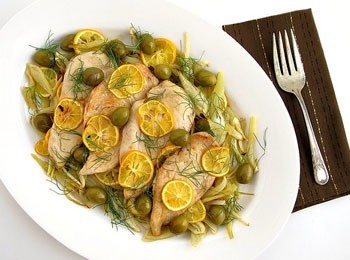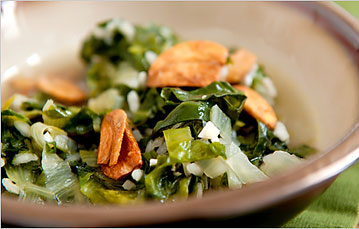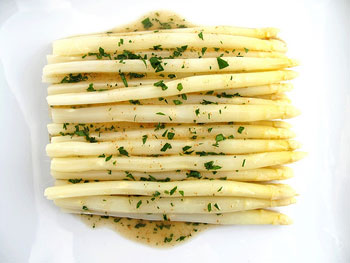 Many vegetables take the spring spotlight: asparagus, fresh peas, and fava beans, among others. And then there a few humbler ones that fall to the wayside, like small bright-red radishes.
Many vegetables take the spring spotlight: asparagus, fresh peas, and fava beans, among others. And then there a few humbler ones that fall to the wayside, like small bright-red radishes.
Many people don't give a second thought to radishes, more or less ignoring them in the market. But it's just not right, and we're going to right this wrong.
Besides just eating radishes raw with salt or on a piece of buttered bread (a HuffPost Taste favorite), radishes can add a lot of interest to recipes, like a great crunchy texture and peppery, spice-y flavor.
You'll find the best radishes are available now, during spring when they're the most delicate.

 Mediterranean flavors are the ones I turn to when I'm in a cooking rut and can't figure out what to make. That's when I cook with ingredients like lemons, olives, capers, canned tomatoes, fennel, garlic, herbs and olive oil. I always have them on hand in my pantry and refrigerator for back up. It's easy to apply these flavors to give any recipe for chicken, fish and even meat a Mediterranean feel.
Mediterranean flavors are the ones I turn to when I'm in a cooking rut and can't figure out what to make. That's when I cook with ingredients like lemons, olives, capers, canned tomatoes, fennel, garlic, herbs and olive oil. I always have them on hand in my pantry and refrigerator for back up. It's easy to apply these flavors to give any recipe for chicken, fish and even meat a Mediterranean feel. Like radicchio and other bitter, tough greens, escarole can survive the winter in many places and appear early in spring. But unlike radicchio, escarole is inexpensive. And it’s more versatile: it tastes better cooked than does its round, red cousin.
Like radicchio and other bitter, tough greens, escarole can survive the winter in many places and appear early in spring. But unlike radicchio, escarole is inexpensive. And it’s more versatile: it tastes better cooked than does its round, red cousin. Everyone knows green asparagus—it's making an appearance right now in the markets, announcing that spring has arrived. But not everyone knows white asparagus. It rarely shows up in the market because it's such a specialty but it's definitely worth searching for. Not only does the color (or absence of) make it unique, its flavor is more delicate and milder than green asparagus. But why is it white?
Everyone knows green asparagus—it's making an appearance right now in the markets, announcing that spring has arrived. But not everyone knows white asparagus. It rarely shows up in the market because it's such a specialty but it's definitely worth searching for. Not only does the color (or absence of) make it unique, its flavor is more delicate and milder than green asparagus. But why is it white? How can anyone resist tart and tiny kumquats, sitting so cute and bright in the produce department at the grocery store? They just look happy. I buy them every year as soon as they make their first seasonal appearance. I never have a plan for them when I set them in my basket, but it doesn’t matter. I buy the organic kumquats, rinse them well and, after I’ve cut the stem ends off, I pop them into my mouth one after the other, as if they were orange jelly beans.
How can anyone resist tart and tiny kumquats, sitting so cute and bright in the produce department at the grocery store? They just look happy. I buy them every year as soon as they make their first seasonal appearance. I never have a plan for them when I set them in my basket, but it doesn’t matter. I buy the organic kumquats, rinse them well and, after I’ve cut the stem ends off, I pop them into my mouth one after the other, as if they were orange jelly beans.
